History of Tibetan Medicine
The Tibetan medical system is one of the world’s oldest known medical traditions. It is an integral part of Tibetan culture and has been developed through many centuries. We believe that the origin of the Tibetan medical tradition is as old as civilization itself.
Because humankind has depended on nature for sustenance and survival, the instinctive urge to health and accumulated knowledge has guided us to discover certain remedies for common ailments from natural sources. For example, applying residual barley from chang (Tibetan wine) on swollen body parts, drinking hot water for indigestion, and using melted butter for bleeding are some of the therapies that arose from practical experiences and gradually formed the basis for the art of healing in Tibet. The Tibetan medical heritage is based on the book of the Four Tantras (rGyud-bZhi), which remains the fundamental medical text even today.
The era from the beginning of human civilisation to the advent of Buddhism in Tibet, can be termed as the pre-Buddhist era. During that time Bon tradition flourished in Tibet and Bon medical practice influenced and enriched the existing Tibetan Medical knowledge and practice. It has been clearly mentioned in a Bon text titled “Jam-ma tsa-drel” that around 200 B.C., (during the emergence of the first Tibetan King Nyatri Tsenpo) there lived twelve scholars of Bon tradition including a medical scholar who treated diseases through medication and therapy. This indicates that Tibetans practiced medicine and there were Tibetan physicians even prior to the advent of Buddhism in Tibet.
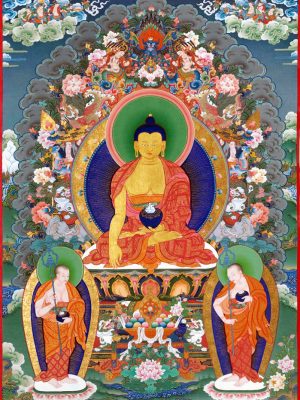
Buddha Shakyamuni (961-881 B.C.,) (according to Phuglug Tradition of Tibetan Astrology)
Shakyamuni Buddha was born in circa 961 B.C., and he lived till 881 BC. During his life time he taught Buddha Dharma (popularly known as Buddhism). Buddhism came to Tibet during the reign of King Thothori Nyantsen (245-364 A.D.,) (according to gSo-rig Kuns ‘Dus ). The Buddhist teachings gradually spread and were assimilated into every part of Tibetan culture, becoming Tibet’s state religion. The philosophy of Tibetan Medicine also got motivated by it and the influences are clearly visible in rGyud-Zhi (the principal Tibetan medical text). The incorporation of Buddhist views of the four immeasurable thoughts and six perfections in the prerequisite conditions of Tibetan physicians are testimony of these influences.
Shakyamuni Buddha was born in circa 961 B.C., and he lived till 881 BC. During his life time he taught Buddha Dharma (popularly known as Buddhism). Buddhism came to Tibet during the reign of King Thothori Nyantsen (245-364 A.D.,) (according to gSo-rig Kuns ‘Dus ).
The Buddhist teachings gradually spread and were assimilated into every part of Tibetan culture, becoming Tibet’s state religion. The philosophy of Tibetan Medicine also got motivated by it and the influences are clearly visible in rGyud-Zhi (the principal Tibetan medical text). The incorporation of Buddhist views of the four immeasurable thoughts and six perfections in the prerequisite conditions of Tibetan physicians are testimony of these influences.
Lha Thothori Nyantsan (245-364 A.D.,) (according to gSo-rig Kuns ‘Dus)
The Indian physicians Biji Gaje and Bila Gazey (according to Yuthok Sernying kyi Namthar) were born to rNga-Chenpo, the King of Yul Pema Nyingpo, and his two wives, one the daughter of a drum maker and the other the daughter of a bell maker. The mothers offered ten drums and ten bells to the Mahabodhi Stupa of Vajrasana and made prayers for their children’s success in benefitting sentient beings. When the boy and girl grew older, they requested their parents to let them learn the Science of Healing. After getting permission, they went to Taxilla in present day Pakistan and studied medicine under the great Physician Atreya. Afterwards, they travelled throughout India and also visited China, Nepal and East Turkistan (which is now under China and called Xinjiang Autonomous Region). They also received medical teachings from another great physician, Kumara Jivaka, at Magadha.
When they were in Vajrasana, Arya Tara prophesied that they would go to Tibet and propagate the Medical Science. During the reign of the 28th King, Lha Thotho-Ri-Nyantsen, Biji Gaje and Bilha Gaje did visit Tibet. The King invited them to his Palace, Yumbu Lakhar, after hearing news about the healings they rendered to Tibetans. He requested them to remain there to teach and practice, and he gave his daughter Yidkyi Rolcha as a bride to Biji Gaje. It is believed that Biji Gaje and Bilha Gaje are still alive and exist in a forest of sandalwood after attaining immortality. They got empowered by medicines during retreats.
Dung gi Thorchog (Dates Unknown)
From Biji Gaje and Yidkyi Rolcha the first known physician in Yuthog lineage, Dung gi Thorchog, was born in the 4th century. He learned the art of pulse reading, pharmacology, moxibustion, bloodletting, dressing and treatment of wounds from his father at an early age.
He became eminent in his field and was appointed as the personal physician to his grandfather, King Lha Thothori Nyantsen, and Trinyan Zungtsan. He was one of the most innovative physicians in Tibet and under his lineage the famous Yuthog Yonten Gonpo is said to have been born. His successive sons continued the lineage and served as personal physicians to the kings of their times for four consecutive generations.
Dharma King Songtsen Gampo (617-650 A.D.,) (according to Dungkar tsigzod chenmo )
During the reign of the 33rd King, Songtsen Gampo, eminent physicians from India (Bhardvaj), China (Han Wang Hang De), and Persia (Galenos) were invited to share their knowledge with Tibetan physicians. Each physician wrote a treatise that was later incorporated into a text called Mijigpe-Tsoncha (A Fearless Weapon), which contains seven volumes. This was presented to the king.
Although the Indian and Chinese physicians returned to their countries, Galenos remained in Tibet to practice and teach, and wrote several texts on medicine. In addition, King Songtsen Gampo’s Chinese wife Kong-jo had brought a Chinese medical text with her, which was translated into Tibetan by Hashang Maha Deva and Dharma Kosha.
Dharma King Trisong Deutsen (742-797 A.D.,) (according to Dungkar tsigzod chenmo)
In the 8th century, King Trisong-Deutsen invited several great physicians for the first ever known medical conference at Samye, Tibet. In attendance there were eminent physicians from India, China, Persia, East Turkistan, and Nepal. Elder Yuthog Yonten Gonpo represented Tibet. The conference lasted for several days, during which the delegates discussed the theories and practices of their medical systems in comparison to those of the others.
Elder Yuthog Yonten Gonpo (708-833 A.D.,) (according to gSo-rig Kuns ‘Dus)
Yuthog Yonten Gonpo was born at Toelung Kyina to Yuthog Khyungpo Dorjee and Gyapa Choeky Dolma on June 25, 708 A.D. In the tradition and father-son lineage, he learned from his father and started practicing basic elements of medicals science at an early age. In order to test his knowledge, the King Me-Agtsom summoned him at the age of ten for a debate with the famed Tibetan physician Drangti Gyalnye Kharphug and many others. Yuthog emerged victorious and became supreme among the nine eminent physicians of Tibet. His clever answers to the visiting scholars, such as Shanti Garba of India and Tongsum Gangwa of China, earned Yuthog a great reputation amongst them, and he was respected by all as an emanation of the medicine Buddha.
Yuthog Yonten Gonpo was born at Toelung Kyina to Yuthog Khyungpo Dorjee and Gyapa Choeky Dolma on June 25, 708 A.D. In the tradition and father-son lineage, he learned from his father and started practicing basic elements of medicals science at an early age.
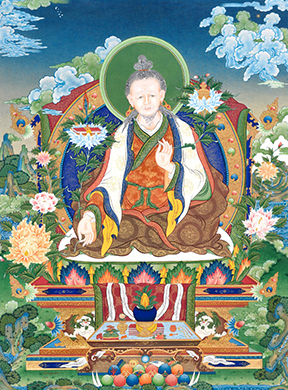
In order to test his knowledge, the King Me-Agtsom summoned him at the age of ten for a debate with the famed Tibetan physician Drangti Gyalnye Kharphug and many others. Yuthog emerged victorious and became supreme among the nine eminent physicians of Tibet. His clever answers to the visiting scholars, such as Shanti Garba of India and Tongsum Gangwa of China, earned Yuthog a great reputation amongst them, and he was respected by all as an emanation of the medicine Buddha.
Yuthog Yonten Gonpo became the personal physician to the Tibetan king Me-Agtsom and Trisong Deutsen. He visited India several times to study with eminent physicians and travelled to China as well. He established Tibet’s first medical institute called “Tanadug” at Kongpo Manlung in the south in 763 A.D., which no longer exists. He devoted his whole life to the propagation and promotion of Tibetan medical science.
Dharma King Tri-Ralpachen (866-901 A.D.,) (according to Dungkar tsigzod chenmo)
Tri-Ralpachen was the 41st Dharma king of Tibet. He is considered very important in the history of Tibetan Buddhism. The Tibetan Empire reached its greatest extend under his rule. In 901 A.D., the Dharma King Tri Ralpa Chen was assassinated by his elder brother Lang Darma and the throne was forcefully seized by the later. Due to Lang Darma’s poor administration of the central government, Tibet disintegrated with civil war. Buddhism was completely destroyed in the central parts of Tibet, but survived in the Far East and West. For the next 411 years Tibet was decentralized and weakened.
Lochen Rinchen Sangpo (958-1056 A.D.,) (according to Ghang-Jong Sorig Tenpae Nyin-je rim-jon gi Namthar Chog-dig)
Lochen Rinchen Sangpo was born in 958 A.D., amidst portentous signs, in a small hamlet called Radni, situated in present Tibetan territory beyond the Shipki pass, which separated Kinnaur and Spiti from the province of Guge to their east. From his birth he displayed uncommon qualities that soon led him to master the Buddhist scriptures.
In the later development of Buddhism, the great translator Lochen Rinchen Sangpo (958-1056 A.D.) with all his effort revived Buddhism and Tibetan Medicine. He travelled to Kashmir and received medical teachings such as Ashtanga Samhita (Tib: Yan-lag brGyad-pa’i sNying-po bsdus-pa; Eng: Condensation of the Essences of Eight Branches) and its commentary, Dhaser (Moonlight) and the veterinary text Shali Hotra from the great Pandit Chandra Ananda, which was later translated by him into Tibetan. His work enhanced the development of Buddhism as well as medicine in Tibet.
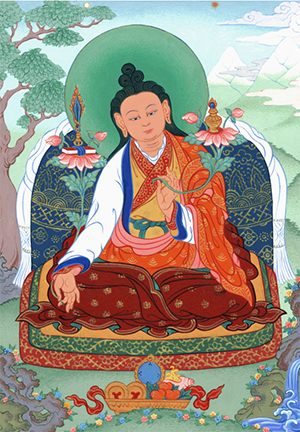
Junior Yuthog Yonten Gonpo (1126-1202 A.D.,) (according to gSo-rig Kuns ‘Dus)
Junior Yuthog Yonten Gonpo was the 13th in the lineage of the Elder Yuthog Yonten Gonpo. Born in Goshi Rethang to Yuthog Khyungpo Dorjee and Padma Oden, he began studying medicine at the age of eight. At ten, he received the whole teachings of rGyud-bZhi from Rogton Konchok Kyab, and from the age of eighteen he visited India six times and received teachings from Dakini Palden Trengwa and the sage Caraka.
On his return to Tibet, Yuthog Yonten Gonpo dedicated his life to the practice of medicine for the benefit of all sentient beings. He wrote Serchen (Golden Notes), Zongchen (Wealthy Notes), cha-lag bco-brGyad (Eighteen Supplementary Works), and Nyingpo Duspa (Condensation of the Essences) and a commentary on its theoretical points called Thongway Melong. He gave his entire teachings to his heart disciple Yeshe Sung. Of his many disciples, three hundred of them are well known today.
Jangpa Namgyal Dragsang (1395-1475 A.D.,) (according to gSo-rig Kuns ‘Dus)
Jangpa Namgyal Dragsang was the seventh in the lineage of King Se’u of Minyag. He was awarded the title Rinpoche Thamka by the King Gongma-Sechen. He was born to Gu’i-ging Chodrak Palsang and Bumkyong-Gyalmo, the daughter of Situ Chorin, at Ngam-ring. At the age of ten, he learned Sutra, Tantra and medicines from Palden Naggi Rinchen and Bodong Chogle Namgyal. He wrote many books on Buddhist Philosphy, Crafts, and Astrology, and eleven books on Medicine. He is one of the two renowned founders of the Jangpa tradition of Tibetan medicine. Mi’i Nyima Thong-wa Donden was one of his best disciples.
Zurkhar Nyamnyi Dorjee (1439-1475 A.D.,) (according to gSo-rig Kuns ‘Dus)
Zurkhar Nyamnyi Dorjee was born to Rigzin Phuntsok and the daughter of Kunkyen Tashi Namgyal in the Earth Sheep year. He learned Buddhist philosophy and medicine from many renowned scholars and, at the age of 16, he wrote Manngag-Jewa-Ringsel (Pith Instructions, Relics in Crores) and many other treatises. He was the founder of the Zurlug tradition of Tibetan medicine. Later, his grandson Zurkhar Lodoe Gyalpo wrote a commentary on rGyud-bZhi called Mepoi Zal-lung (Oral Instructions of my Forefathers).
Regent Sangye Gyatso (1653-1706 A.D.,) (according to gSo-rig Kuns ‘Dus)
Sangye Gyatso was born to Asug and Buthi Gyalmo in the Water Snake year. He began his studies at the age of five and when he was eight, he learned Sutras and Tantras from the Great Fifth Dalai Lama. He learned Astrology and grammar from Darpo Lotsa, Yangchar (Arisal of Vowels) from Lugo Dachen Ngag gi Wangpo, and medicine from Jangpa Lhunding Namgyal Dorjee, and he became an expert in all these fields.
Sangye Gyatso was appointed Regent by the Great Fifth Dalai Lama (1617-1682). During his 26 years in this position, the Potala Palace was rebuilt and expanded to its present size and the golden stupa of the Great Fifth Dalai Lama was built.
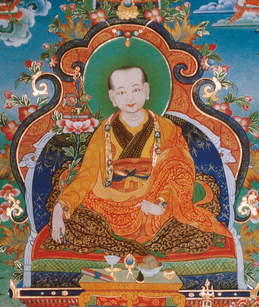
Under his guidance, seventy nine medical thangkas depicting human anatomy were produced, the rGyud-bZhi was edited and published, and the Chagpori Medical College was established in Lhasa in 1696 (the Fire Mouse year). Sangye Gyatso wrote many books on astrology, especially Vaidurya-Karpo (White Beryl), and medicine, including Vaidurya sNgon-po (Blue Beryl), the most popular commentary on rGyud-bZhi. He also wrote the famous book on Tibetan Medicinal History titled Sorig Khogboog and a book on medical practice called Man-ngag Lhen-thab. On the whole he brought Tibetan Medicine and Astrology to a higher level with utmost dedication and sincerity.
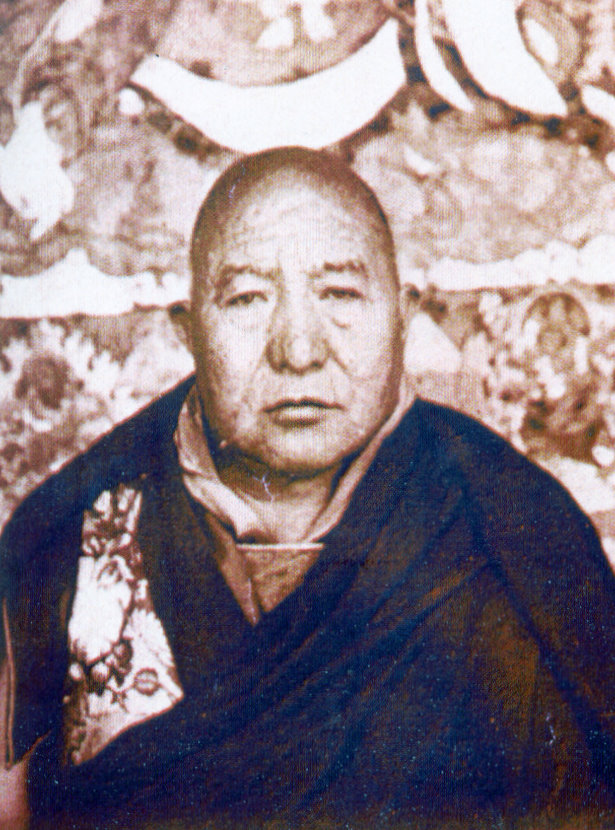
Rev. Khyenrab Norbu (1883-1962 A.D.,) (according to gSo-rig Kuns ‘Dus)
Rev. Khyenrab Norbu was born to Astrologer Ngawo-che and Yangchen in the Water Sheep year at Tsethang, southern Tibet. He was admitted to Ngachoe Monastery, and was known for his excellence in studies, intelligence, compassion and humbleness. As a result, he was selected from many young monks as a candidate to study medicine and went to Chagpori Medical College in Lhasa. There he was taught by Dr. Ngawang Choden. He passed his exams in a relatively short time.
In order to preserve and expand Tibetan medicine, the Great Thirteenth Dalai Lama (1876-1933) in 1897 appointed Tekhang Jampa Thubwang and Jabung Damchoe Palden as his senior and junior physicians respectively, and ordered them to teach selected students. Khyenrab Norbu, Tenpa Yarphel and Tsultrim Nyandrag were chosen from Chagpori Medical College to study under the senior physician and they received teachings on rGyud-bZhi and its various commentaries such as Vaidurya sNgon-po (The Blue Lapis Lazuli).
Khyenrab Norbu also learned medicine, astrology, poetry and grammar. He was named “Yangchen rgyas pai Lodoe” as an honour to his hard work. When he was 29, in the Iron Dog year (1912), he took responsibility of the Medical Clinic at Drepung Monastery – to maintain the health of the monks. He began writing books and doing research on Tibetan Medicine.
The Great Thirteenth Dalai Lama, established Lhasa Men-Tsee-Khang in the year of the Fire Dragon, 1916. Dr. Khyenrab Norbu was appointed to the post of Junior Physician to H. H. The Dalai Lama in 1918 and spent his entire life promoting Tibetan culture, especially medicine and astrology.
He wrote and compiled many books. Such as:
*A description on Root Tantra’s illustration(Tib: gsorig-rgya-tso-nyingpo; Eng: Essences from the Ocean of Medical Healing)
*A book on medicinal plants (Tib: Ngotsar-sergyi-nyema; Eng: Wonderful Golden Hair)
*A books on the uses of medicines (Tib: Man-byor-nuspa-phyogdus; Eng: Condensation of the Effects of the Medicine;
*A Book on the uses of medicine ( Tib: Duetsi-‘bumsang; Eng: One Hundred Thousand Good Nectars)
*A book on astrology (Tib: Rigden-nyingthig; Eng: Endowment of Knowledge of the Heart-Drop)
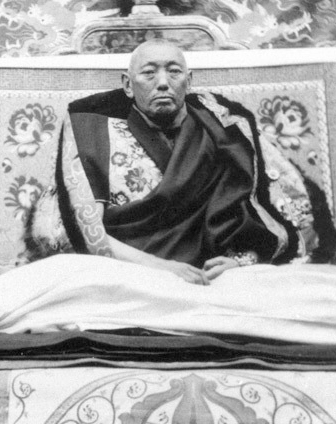
Some of the contemporary eminent physicians like Dr. Tenzin Choedak and Dr. Lobsang Wangyal (the Senior and Junior physicians to H. H. The XIV Dalai Lama), Dr. Yeshi Dhonden (the former personal physician to H. H. The XIV Dalai Lama) and Dr Jampa Thinley (the former director of Lhasa Men-Tsee-Khang) were all his disciples. He died at the age of eighty in the Water Tiger year, 1962.
A Dark Period in Tibetan History
The Chinese invaded Tibet from the east in 1949. On 10th March, 1959, the Chinese ruthlessly suppressed peaceful Tibetan demonstrations in Lhasa by artillery fire and bombardment. His Holiness the 14th Dalai Lama, followed by thousands of Tibetans, escaped into exile in India.
During the Cultural Revolution (1966-1976 ) the Chinese destroyed more than 6,000 monasteries, demolished statues, burnt religious and astrologyl-medicine books, destroyed forests, and wreaked unimaginable destruction to flora and fauna. As a direct consequence of Chinese repression, more than 1.2 million Tibetans died.
Men-Tsee-Khang in Exile
The Chinese have used every possible means to exterminate the culture and identity of the Tibetan people. In order to preserve and promote the richness of Tibetan culture, many institutions, monasteries and schools were re-established in India under the auspices of His Holiness the 14th Dalai Lama. Men-Tsee-Khang (Tibetan Medical and Astro. Institute of H.H. the Dalai Lama) was re-established under the visionary guidance of His Holiness the 14th Dalai Lama on March 23rd, 1961, with Dr. Yeshi Dhonden and Ven. Dukhorwa Lodoe Gyatso as the heads of the Medical and Astrological centers, respectively and Dr. Jamyang Tashi as the Director of Pharmacy & Physician to His Holiness the Dalai Lama. With the arrival of other senior doctors from Tibet like Dr. Tenzin Choedak, Dr. Lobsang Wangyal and Dr. Nyarongshar Kunga Gyurmey in 1980s, the institution was further developed.

Since its inception, the institution has undergone significant development. Today it houses various academic departments like the Pharmaceutical, Clinical Research, Materia Medica, Medical and Astro. Literary Research, Herbal Product Research, Astrology department and the College where Tibetan doctors and astrologers are trained. The Astrology department produces a range of annual almanac, calendars, amulets, horoscopes for individuals, readings and various astrological charts. The Pharmacy manufactures different forms of remedial pills; the Clinical Research conducts research on disorders like diabetes, cancer, hepatitits and hypertension in collbaoration with western scientific system of analysis; Materia Medica identifies and documents herbs using correct Latin names, preserving pressed specimen of plants and cultivation of rare species for research; Medical & Astro. Litrerary Research documents and publishes Tibetan medical and astrological treatise; Herbal Products Research manufactures herbal products for rejuvenating body and skin based on traditional Tibetan system of formulation and Quality Assurance Laboratory checks the quality of raw materials, medicine and herbal health care products according to scientific methods as per the norms of GMP (Good Manufacturing Practice).
Reference:
gSo-rig Kun ‘Dus las bod kyi gSo-ba rig-pa, Tibet people’s printing press , 2000
GangsChan mKhasGrub rimbyon mingmZod, Kansui Mirig printing press, 1992
Gang –lJongs gSo-rig bsTan-pa’i Nyin-byad rim- byon gyi rNam-thar phyogs-bsGrigs, Dharamsala Men-Tsee-Khang, 1992
Tibetan Annual Almanac of Water Dragon Year, 2012
Dung dkar_Tshig mdzod chen mo, Chinese Tibetan studies printing press, 2002

